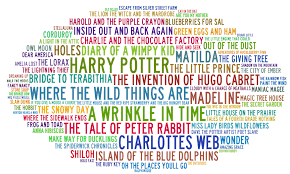Having just returned from a short holiday in
Mumbai -a city I have always loved :) - I thought I would review these two books by Suchitra Krishnamoorthi, set in a middle-class housing society in that buzzing, teeming, extreme metropolis. The protagonists of the two books are Chitrangana and her friend
Sonal respectively.
The Summer of Cool
Krishnamoorthi's first book is about 9-year-old Chitrangana who lives
with her mother Kamala and 17-year-old sister Smita, and has no recollection of
her father, Sidharth Verma. She is not allowed to speak of him as enquiries
about Appa put her mother in a rage and bring on one of her migraines. “There
was to be no talk of him and that was that . . . no photographs . . . or memory
left of him in their lives”.
The book also puts forth the
notion that a community can take the place of a family. Like children often do,
Chitrangana creates a happy world from her surroundings and its denizens are
the residents of the apartment building - Underwear Aunty, Khadoos Uncle, the
upstairs boy who get romantic with Chitrangana’s sister. She plays games with
her friends, has fights with the children from the next block, indulges in
pranks on the stuffy and snoopy neighbours, and tells TALL tales. Chitrangana also discovers where
her father lives, has an adventure in the process of trying to meet him, and ….
Well, I guess you must read the book and find out. All I can say is that while
the book is a happy book, it isn’t sloppy sentimental.
Summer of Cool touches upon issues of gender insecurities and the traumatic effects of
parental separation on the child. However
Chitrangana learns to draw strength and support from her own convictions, her
friends in the colony and her doll. The narrative thus subtly points out that
girls who wish to empower themselves need to only turn to their peers and look
deep into themselves.
Good News Reporter
In Krishnamoorthi’s second novel Chitrangana’s friend, Sonal Wadalkar is brought up by a single parent too, her father. (Interestingly, single fathers appear to have a better support structure than single mothers!)
Sonal tires of listening to and reading about bad news in the media and decides to become a good news reporter. Armed with a concealed camera her father has given her, she starts documenting positive stories from the Swapnalok residents (much like the website The Better India which attempts to bring to our notice “the happy stories, the unsung heroes and heroines, the small good deeds”)
Sonal attempts to create a positive re-reading of the world by focussing on kindnesses, celebrations, sharing and caring. She works to undo the falsely situated perspective of the dominant order which sees the world empirically, in terms of the number of news-making disasters, tragedies and murders, and shifts the focus to an alternative reading that shows up the limitations of such a perspective. How Sonal wages her several battles and emerges victorious constitutes the story.
Sonal tires of listening to and reading about bad news in the media and decides to become a good news reporter. Armed with a concealed camera her father has given her, she starts documenting positive stories from the Swapnalok residents (much like the website The Better India which attempts to bring to our notice “the happy stories, the unsung heroes and heroines, the small good deeds”)
Sonal attempts to create a positive re-reading of the world by focussing on kindnesses, celebrations, sharing and caring. She works to undo the falsely situated perspective of the dominant order which sees the world empirically, in terms of the number of news-making disasters, tragedies and murders, and shifts the focus to an alternative reading that shows up the limitations of such a perspective. How Sonal wages her several battles and emerges victorious constitutes the story.
Krishnamoorthi
focuses on two pre-pubescent girls who, in line with the quest trope, leave the
safety of their homes, venture into the dangerous world of the outside, face
their dragons and return home. The Swapnalok
society series is about girl power and also about upholding a more innocent
and non-cynical world.














